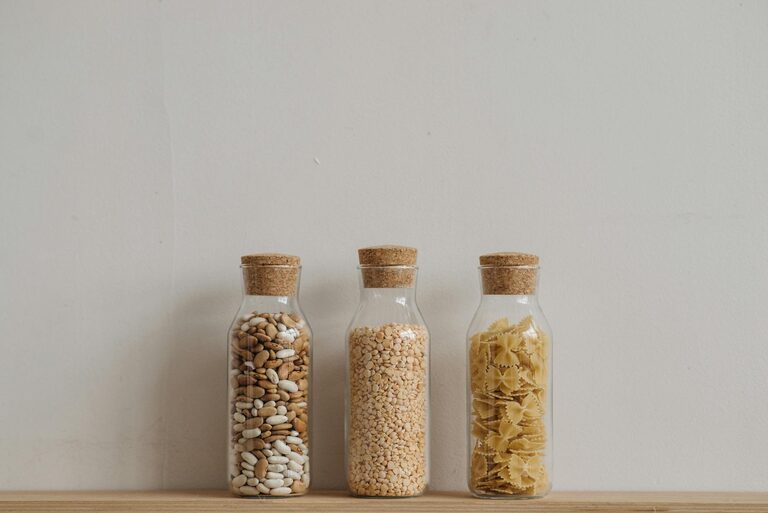Keeping a tidy fridge and pantry is key to a well-functioning kitchen. An organized food storage space makes meal planning easier, helps reduce food waste, and saves time when cooking. Whether you’re starting fresh or trying to maintain order, this guide offers straightforward steps and helpful ideas to keep your fridge and pantry neat and efficient.
Why Organize Your Fridge and Pantry?
Before diving into the how, it’s good to know why organization matters:
– Reduces Food Waste: Easily see what you have before buying or cooking.
– Saves Time: Spend less time hunting for ingredients and cleaning up messes.
– Improves Food Safety: Helps keep foods fresh and prevents spoilage.
– Simplifies Meal Prep: Quick access encourages healthy, home-cooked meals.
Now, let’s explore practical ways to maintain order.
How to Organize Your Fridge
1. Clear Everything Out and Clean
Start with a clean slate:
– Empty all items from your fridge.
– Check expiration dates and toss spoiled or stale food.
– Wipe down shelves, drawers, and door compartments with a gentle cleaner or a mixture of water and baking soda.
2. Group Items by Category
Sort foods into groups such as:
– Dairy and eggs
– Meats and seafood (store in the coldest part, usually the bottom)
– Fruits and vegetables (use crispers)
– Condiments and sauces
– Drinks
Using this system makes everything easier to locate.
3. Use Clear Containers and Labels
Clear containers help you spot contents quickly. Labeling items with dates also reminds you when to use them by. Small bins or drawer organizers can hold snacks, cheese, and deli meats.
4. Know the Optimal Fridge Zones
Keep in mind these storage tips:
– Top Shelves: Ready-to-eat foods like leftovers, drinks, and ready meals.
– Middle Shelves: Dairy products.
– Bottom Shelves: Raw meat, fish, and poultry, ideally on a plate or tray to catch drips.
– Crisper Drawers: Fruit and vegetables, separated to prolong freshness.
– Door: Store condiments, sauces, and drinks (the door has more temperature fluctuations).
5. Adopt a First-In, First-Out System
When restocking, place new items behind older ones. This encourages using older food first, minimizing spoilage.
How to Organize Your Pantry
1. Start With a Clean Sweep
– Empty your pantry shelves.
– Check product expiration dates and toss anything expired.
– Wipe down shelves to remove dust or spills.
2. Categorize Pantry Items
Group similar items together, such as:
– Baking supplies
– Canned goods
– Grains and pasta
– Snacks
– Spices and herbs
– Breakfast items (cereals, oatmeal)
3. Use Storage Containers
Transfer loose items like flour, sugar, rice, and grains into airtight containers. This keeps them fresher longer, prevents pests, and provides a uniform look.
4. Label Everything
Clear labels help everyone in the household find what they need quickly. You can use a label maker, stickers, or chalkboard labels for reusable containers.
5. Arrange for Accessibility
Place frequently used items at eye level. Store rarely used or bulkier items on higher or lower shelves.
6. Invest in Shelf Organizers
Consider adding:
– Tiered racks for cans and spices
– Lazy susans for small bottles or jars
– Baskets or bins to group snacks or packets
These tools optimize space and keep everything visible.
Maintenance Tips to Keep It Tidy
1. Regularly Check for Expired or Spoiled Food
Set a reminder every month or two to go through your fridge and pantry. Dispose of anything you no longer want or need.
2. Plan Weekly Meal Preps
Meal planning helps you shop smarter and ensures you use what’s already in your food storage.
3. Clean Spills Immediately
Promptly clean any spills or leaks to prevent odors and sticky messes.
4. Encourage Household Participation
Make sure everyone using the kitchen understands the organization system. A quick chat or notes can help keep everyone on the same page.
5. Use Clear Storage Rules
Consider keeping open food sealed in containers immediately after use, always wiping containers before putting them back, and returning items to their designated spot.
Bonus: Sustainable Tips for Food Storage
– Use reusable silicone bags instead of disposable plastic wraps.
– Store herbs in a glass of water covered loosely with a bag.
– Freeze excess fruits and veggies to extend their life.
– Use breathable cloth bags for some produce instead of plastic.
Conclusion
A tidy fridge and pantry make cooking easier and more enjoyable. By following these simple organization strategies and keeping up with regular maintenance, you can save time, reduce waste, and create a kitchen space that feels calm and inviting. Start small—maybe with one shelf or drawer—and gradually build an organized system that works perfectly for your household.
Happy organizing!

